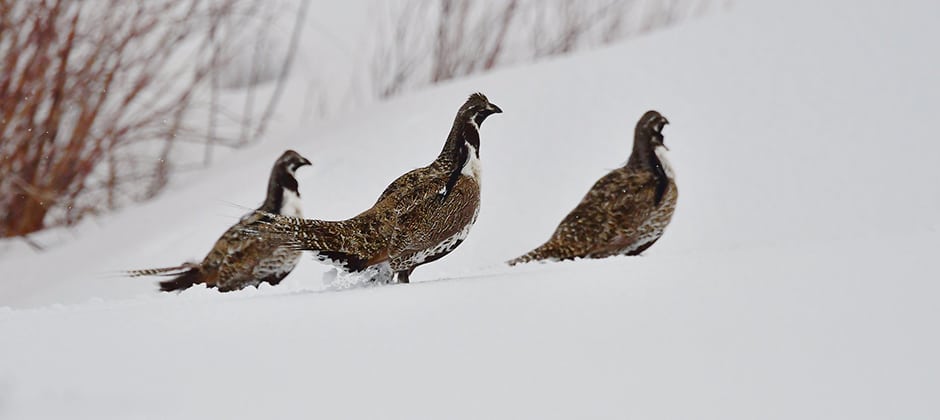Share this article
Gunnison sage-grouse recovery plan released
A recent draft recovery plan the U.S. Fish and Wildlife Service released for federally threatened Gunnison sage-grouse (Centrocercus minimus) would relocate the birds to increase local populations.
The Service plans to move birds from more resilient populations to less resilient ones throughout its limited range in southwest Colorado and southeast Utah.
Upon its 2014 Endangered Species Act listing, the Service designated 1.4 million acres of critical grouse habitat. When the agency first proposed listing the bird as endangered in 2013, states, tribes and landowners worked together to reduce threats to the species, leading to the threatened designation. That decision sparked the states of Colorado and Utah to challenge the legality of the listing. Last year, a federal court upheld the Service’s decision.
In 2015, the Center for Biological Diversity, the Western Watersheds Project and WildEarth Guardians also responded to the decision, suing the Fish and Wildlife Service, seeking to compel it to list the Gunnison sage-grouse as endangered. Those organizations agreed to suspend the lawsuit if the Service would agree to complete a recovery plan within 30 months.
Under the draft recovery plan, birds will be captured from the larger Gunnison Basin population in Colorado and relocated to the Piñon Mesa, San Miguel Basin, Crawford and Monticello populations in Utah and Colorado. The plan would also require federal agencies to promote Gunnison sage-grouse conservation through their resource management plans, especially within 4 miles of the species’ breeding grounds known as leks, and to work with counties to avoid, minimize and mitigate disturbances to grouse.
The draft recovery plans sets a recover target of 3,669 birds in the Gunnison Basin population for at least seven out of nine consecutive years, with a total of 770 birds in four other satellite populations.
This recovery goal for the main population is fewer than the 3,978 that comprised the Gunnison Basin populations when the bird was listing in 2014, which has garnered criticism from some environmental groups, including those involved in the lawsuit.
Recovery plans are an essential tool in the conservation of endangered and threatened species. The Wildlife Society, through its position statement on the ESA, supports using scientific expertise to develop recovery plan biological objectives, quantitative interim and final recovery targets, and to assess whether an implementation strategy is likely to achieve biological goals. It also calls on agencies to involve and use additional stakeholder inputs to help develop implementation strategies to achieve recovery objectives.
The Service will accept public comments on the recovery plan until Dec. 31.
Read TWS’ standing position on Threatened and Endangered Species and Position Statement on the U.S. Endangered Species Act.
Header Image: The U.S. Fish and Wildlife Service released a recovery plan for the Gunnison sage-grouse, which was listed in 2014. ©Larry Lamsa








